
Rediscovering Japan

Rediscovering Japan
Travel (Kagoshima Part 1 (Kirishima/Kagoshima))

by tomizuta
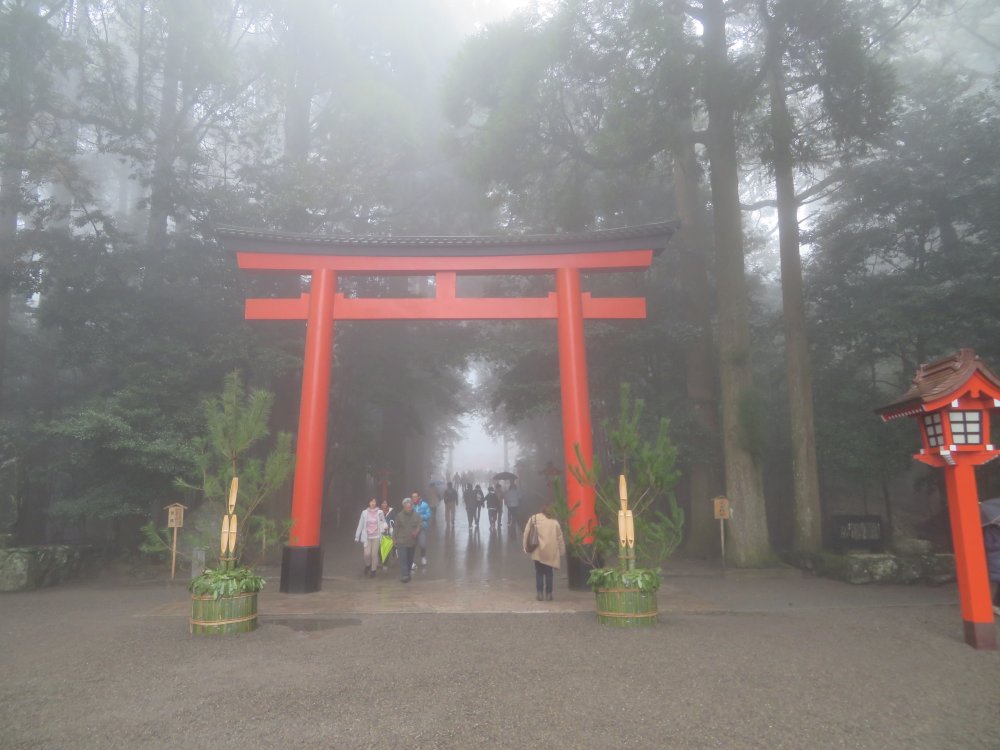
The shrine was engulfed in a dense fog in early January which intensified the sacred and mystical atmosphere.
Just before he died, my father made a visit to Kagoshima Prefecture. My father born in 1926 barely escaped being called to the war front as the war came to an end in August 1945. As a journalist, he always stood on the side of the weak and was a staunch pacifist, which I knew came from his experience of the tragedies of WWII. I was at last able to fulfill my desire to follow his trail in Kagoshima Prefecture that I’d never been before. Kagoshima Prefecture is located in the southernmost part of Kyuushuu. It is composed of the Satsuma region in the west including Satsuma Peninsular, the Oosumi region in the east including Oosumi Peninsular and the southern islands the largest of which are Amamiooshima, Yakushima (a World Natural Heritage site) and Tanegashima. It has a population of 1.6 million ranking 24th among the 47 prefectures. In the history books, there are early references to Hayato people believed to have come from the southern islands to the Kagoshima area that succumbed to the rule of the Yamato Court around the 8th century, the powerful Shimazu Family who are one of the longest surviving feudal lord family that ruled the area for at least six centuries to the Meiji Restoration and the role Satsuma Fiefdom played in the Meiji Restoration and the ensuing Meiji government. In early January 2018, we landed at Kagoshima Airport at 11am, picked up our rent-a-car and drove off to our first destination, KirishimaJinguu.
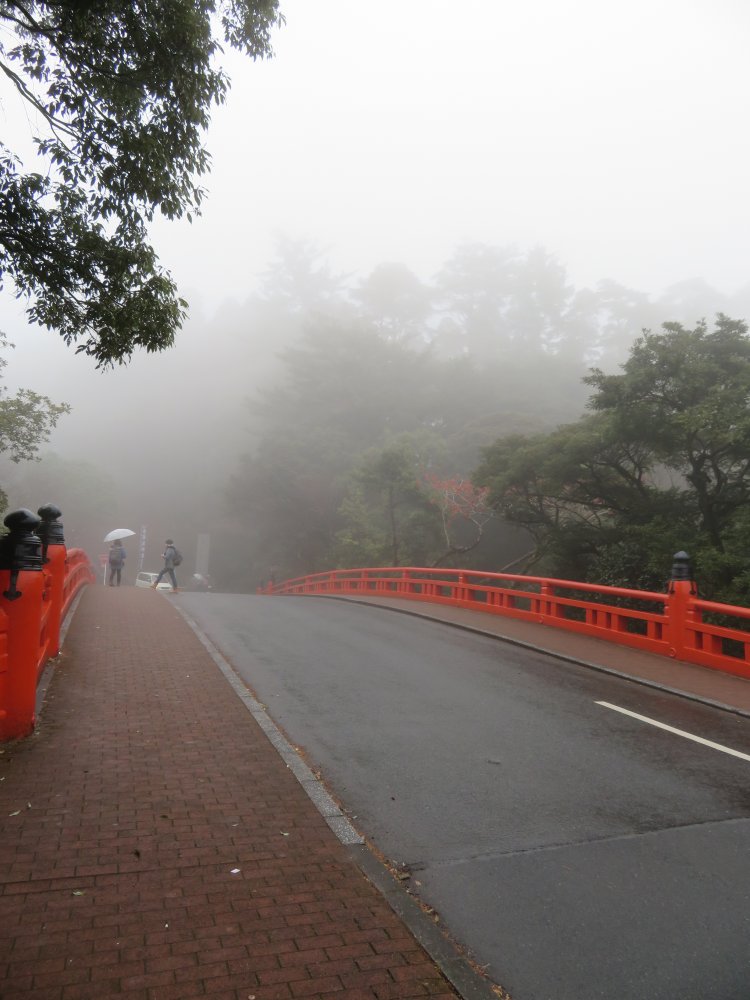
From the entrance torii gate we crossed Kamihashi (God's Bridge) towards the approach to the Honden (main shrine).
Jinguus (grand shrines) are the twenty or so of the most prominent Shinto shrines that worship the ancestor Deities of the imperial family. In a historical list of Shinto Shrines composed in the 10th century only three shrines are mentioned as Jinguus, Isejinguu, KirishimaJinguu and KatoriJinguu (Chiba Prefecture). KirishimaJingu worships the God Niniginomikoto, the grandson of the founder Goddess Amaterasu, who descended to the Mount Takachiho on the border of Miyazaki and Kagoshima Prefectures to rule Japan. One can easily understand why it was ranked as one of the most prominent Shinto shrines from its location in the area that Niniginomikoto descended to Japan. The shrine is at about 480 meters above sea level. According to the homepage of Kirishimajinguu, the shrine was originally built in the early 7th century closer to Mounts Kirishima and Mihachi. But as the mountains in the Kirishima Mountain Range are basically all active volcanoes, the original shrine was destroyed in the 10th century and was rededicated at the current site in the late 15th century. The shrine was burnt down by fire and the current shrine buildings are those built in the early 18th century. .
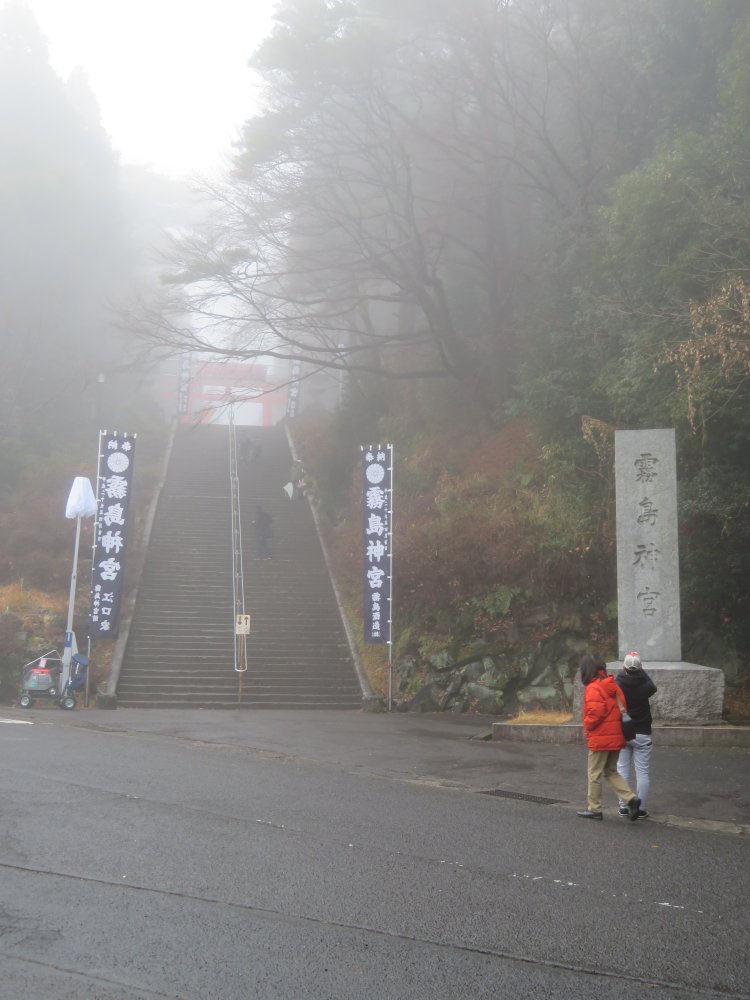
The steps leading to the second torii gate. The stone sign on the right with Kirishimajinguu engraving.
It was raining that day and the shrine was engulfed in a dense fog when we arrived in early January which intensified the sacred and mystical atmosphere of the shrine. From the entrance torii gate we crossed the sacred bridge to come to the bottom of steps leading to the shrine buildings level. From the top of the stairs appeared the second torii gate followed by a paved approach with a gradual rise to reach the shrine offices (shamusho) completed in 1930 in a genuinely Japanese building style.
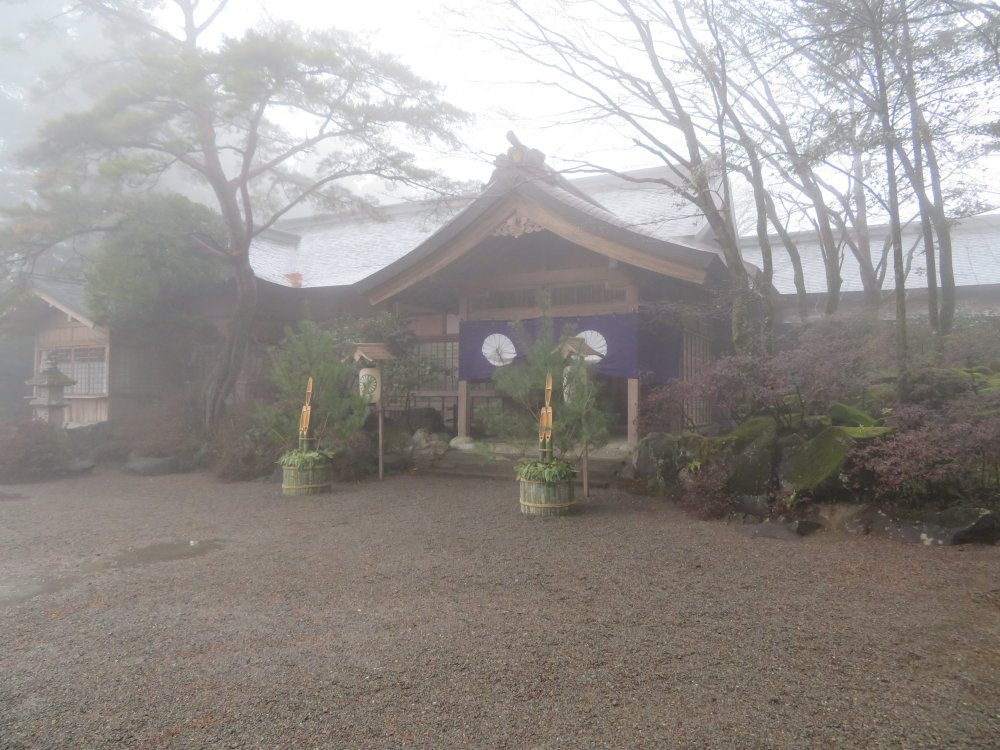
The shrine offices (shamusho) completed in 1930 in a genuinely Japanese building style.
Passing the shamusho on our left, we made way through the third torii gate leading to the main shrine area. It was early January and there were many visitors paying their New Year’s respects. Visitors are not allowed beyond the outside praying area but I managed to get a glimpse of the inner area from the side.
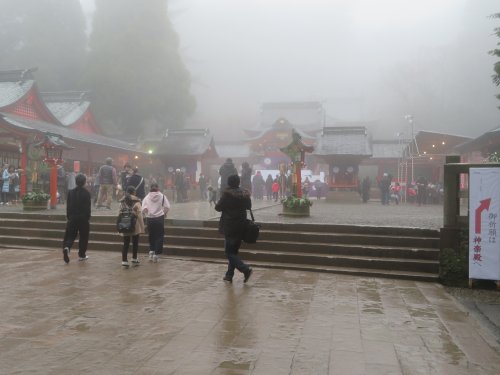
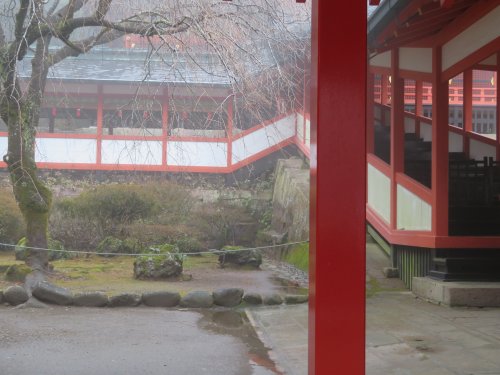
There were many visitors In front of the Honden (main shrine) (left) and I managed to get a peek inside the Honden from the side(right).
Kagoshima is famous for its shouchuu, distilled alcoholic beverage made usually from sweet potatoes or barley. It is customary for local breweries to dedicate their beverage to Shinto shrines. Usually it would be sake barrels on the side of torii gates. But here in Kirishimajinguu there were no displays of barrels. Instead there was a board with brand labels. There was only one sake brewery that I noticed was on the board. We left Kirishimajinguu and drove west to our next destination the gardens of Sengan-en and the historical building of Shoko Shuuseikan, both a World Cultural Heritage site.
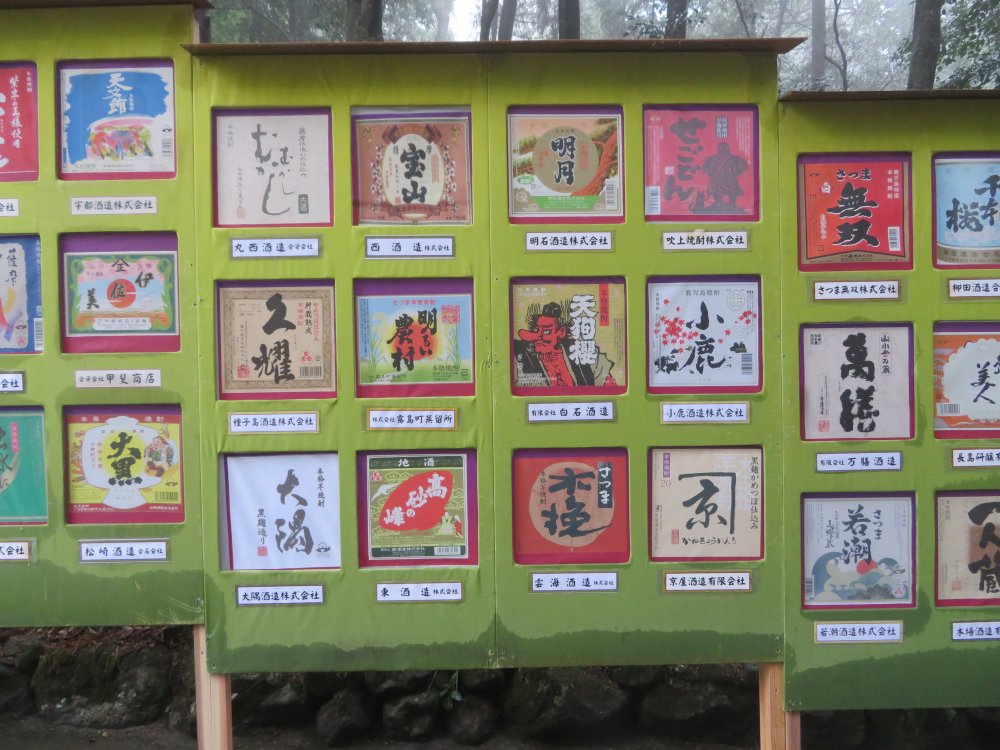
Here in Kirishimajinguu there were no displays of sake barrels. Instead there was a board with brand labels of shouchuu.
Sengan-en’s home page writes “Sengan-en is a traditional Japanese garden
and stately home in Kagoshima, Japan, that has been passed down in the
Shimadzu family for over 350 years. The garden boasts spectacular views
of active volcano Sakurajima, and the house provides a glimpse into the
lifestyle of a powerful feudal lord. Sengan-en and the surrounding area
was fundamentally important in the modernization of Japan. It was here
that Western industrial technology was introduced to Japan, studied and
used in the creation of modern factories. Shoko Shuseikan is a museum set
in a 150 year old stone building originally used as a machine factory.”
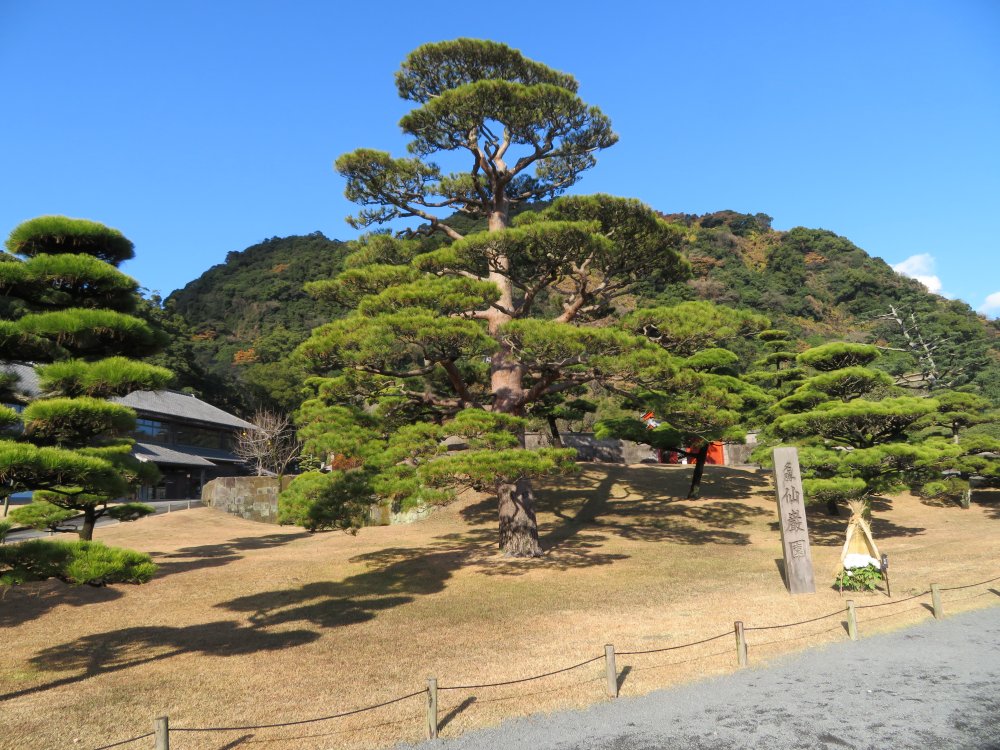
It was a beautiful day as I approached the gardens of Sengan-en.
We paid the admission fee of 1,000 yen that allows you to visit both the gardens and Shuuseikan and as we made our way to the residence and main garden area there were gift shops with an extensive range of local products from food to craft. Following the gift shops we came to a recommended photo site with a spectacular view of Mount Sakurajima. The best view of the garden with the borrowed scenery in the back is admired from the best room in the residence. So I went as close as possible to the main residence to command this spectacular view.
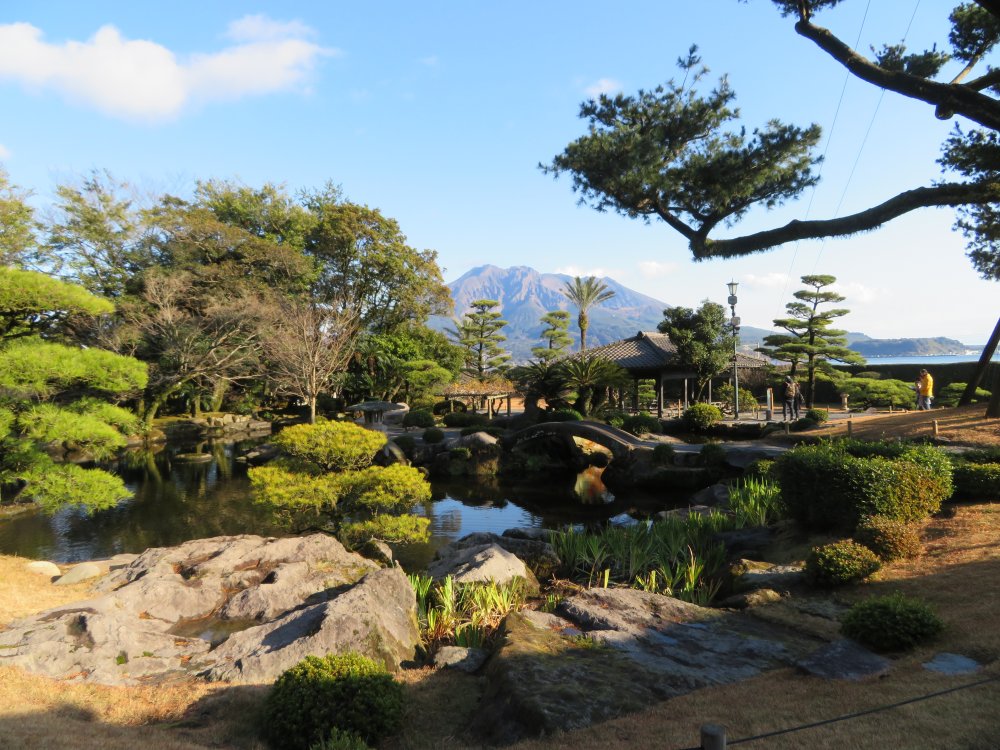
I went as close as possible to the main residence to command this spectacular view.
We next followed the path to the Kyokusui garden, where Kyokusui events are held. Sengan-en’s home page tells that the event “is an elegant poetry game originating in ancient China in which small cups of sake are floated down a winding stream. Participants dressed in traditional clothing sat along either side of the stream must write a waka poem before the cup passes in front of them. On completing their poems the participants take the cup from the stream and drink the sake.”
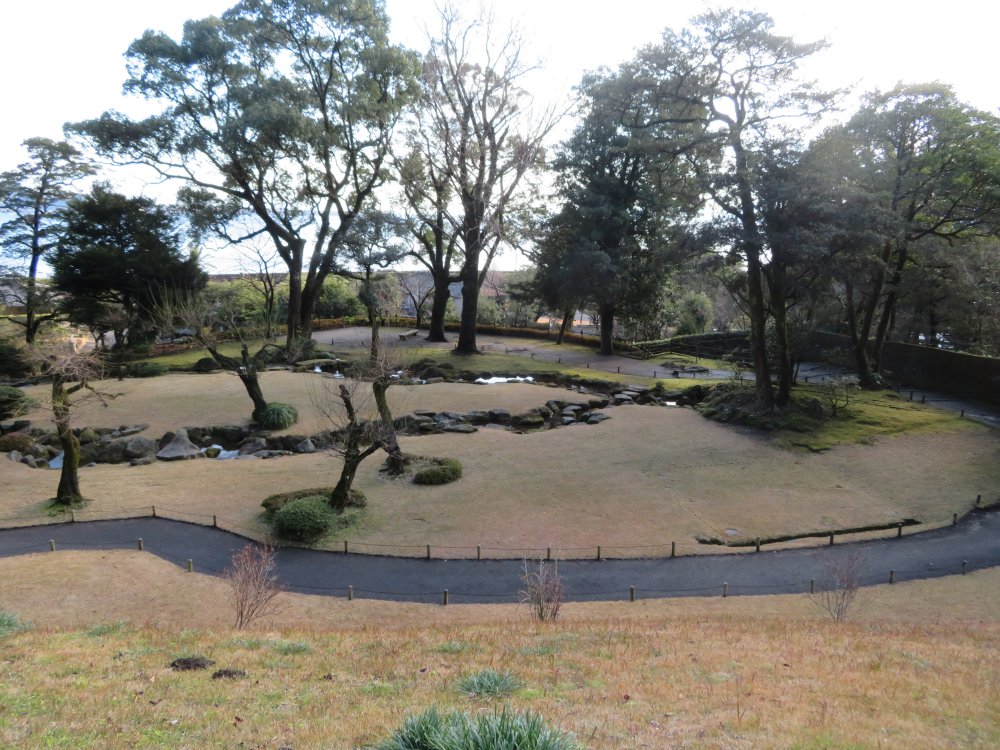
The Kyokusui garden where Kyokusui events are held.
I understand that if you pay an additional 600 yen, you can take a guided tour of the main residence. Unfortunately we didn’t have the time and moved on to visit Shuuseikan.
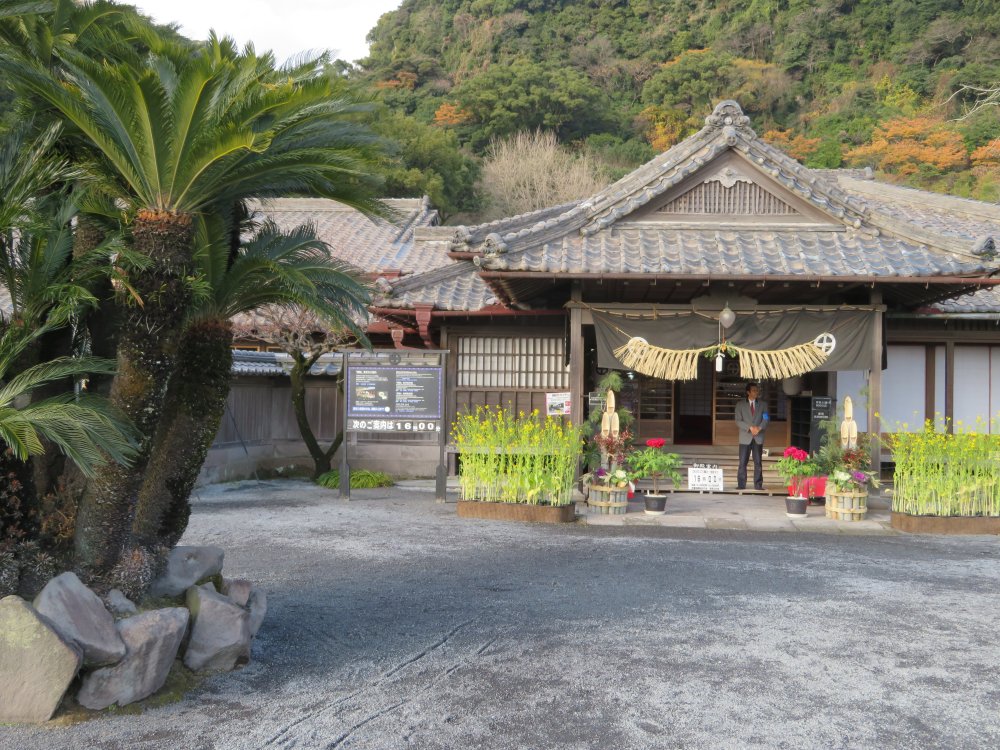
If you pay an additional 600 yen, you can take a guided tour of the main residence.
I need to briefly touch upon history. The Tokugawa shogunate adopted an isolation policy from the 16th century. Japan closed its ports to foreigners with the exception of China, Holland and Korea. In the 19th century western countries came to Japan demanding it to open its doors. Although there was much argument against from feudal lords including Satsuma, the Tokugawa government succumbed to foreign pressure and entered into Amity and Commerce treaties with the US, Holland, Russia, Britain and France in 1858. In 1862 a British man was killed and three wounded at Namamugi (now part of Yokohama City) by Satsuma samurai guards of a procession of Nariakira Shimazu on his way back to Satsuma. Satsuma rejected Britain’s demand to extradite the responsible samurais, resulting in a three day war between Britain and Satsuma. The British opened fire from its military fleet in Kagoshima Bay to Tsurumaru Castle that I will talk about later. The British received a strong counter attack and withdrew its fleet. Casualties were by far larger for the British. Following this Britain and Satsuma established close ties. The British had learned not to underestimate Satsuma and Satsuma came to realize the impracticality of the continuation of the isolation and the necessity to expedite the import of Western technology. Nariakira Shimazu ordered the construction of Shuuseikan completed in 1865. Many British advisors were invited to Satsuma to assist in the modernization efforts including the import of steam-powered equipment. The museum has an informative display of such imported equipment.
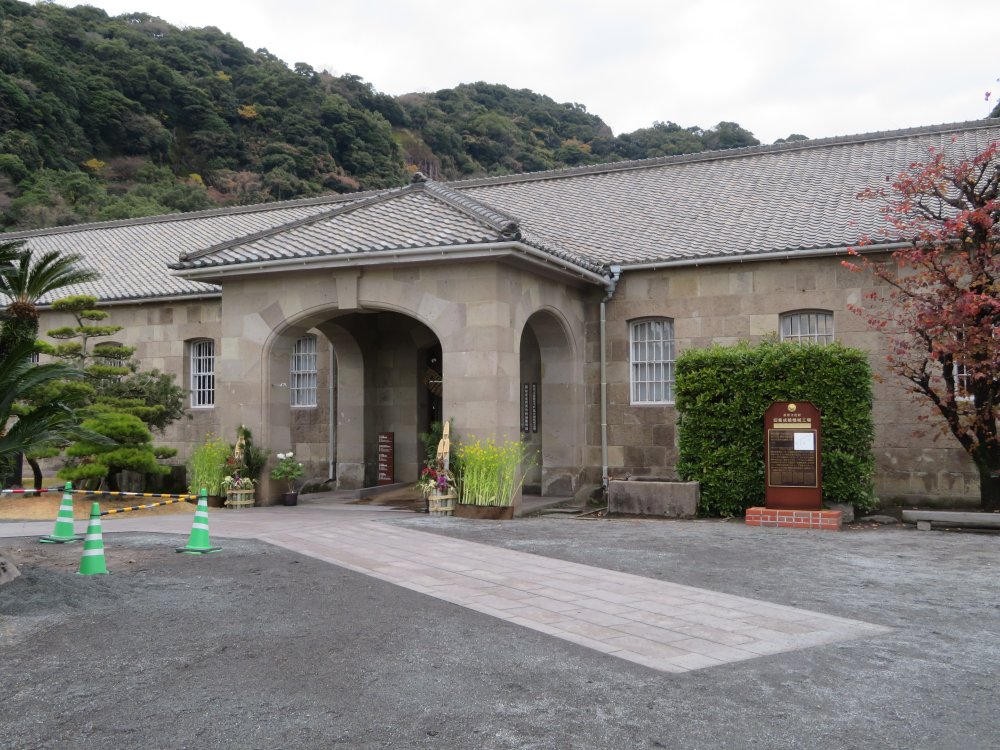
Shuuseikan has an impressive display of steam powered equipment imported from Europe in the middle of the 19th century.
A couple of minutes’ walk from Shuuseikan and on the opposite side of the main road is the former residence for the British engineers assisting the Shuuseikan spinning factory cpmpleted in 1867. It is worth the admission fee of 200 yen to view this early Meiji era western style two story building and the various displays of furniture and information inside.
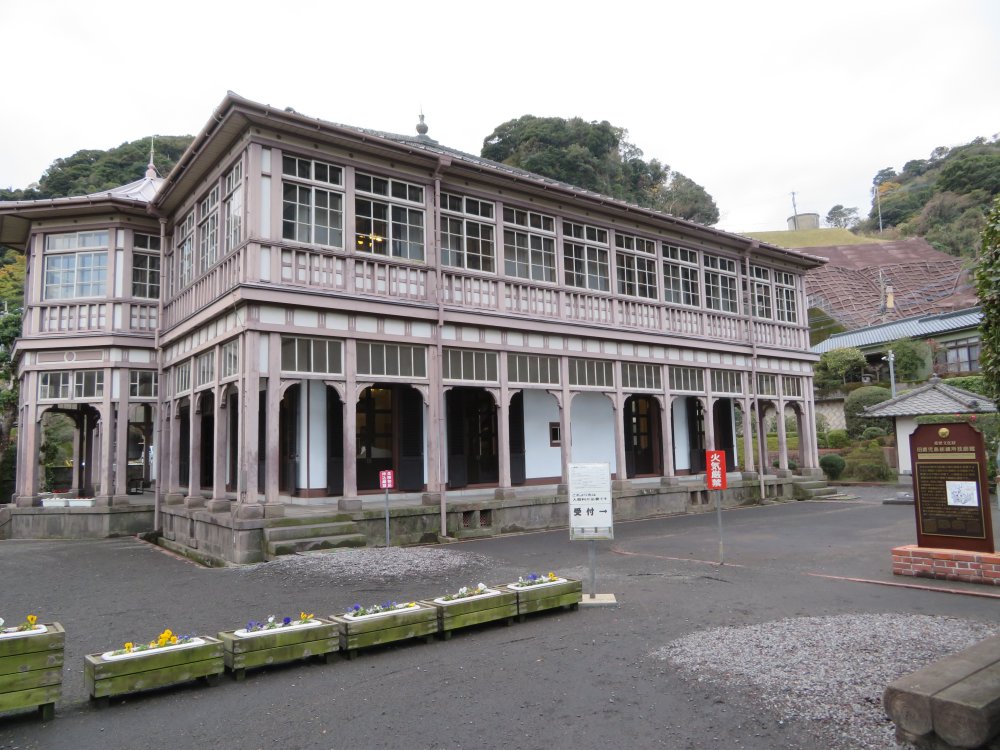
The former residence for the British engineers assisting the Shuuseikan spinning factory cpmpleted in 1867.
I made a quick visit to Tsurumine Shinto shrine. This is a shrine that worships the ancestors and descendants of the Shimazu Family. Typically the grave of feudal lord families are in Buddhist temples. They are called Bodaiji meaning the Buddhist temple to mourn for the deceased. But in the early Meiji era when Shinto became the national religion of Japan, there was a movement against Buddhist temples, in particular the Buddhist temples that for long had sat peacefully next to Shinto shrines. The movement was extremely severe in Kagoshima and many prominent Buddhist temples were vandalized and closed. It was the same with the Bodaiji of the Shimazu Family so this Shinto shrine was dedicated to the family in the early Meiji era.
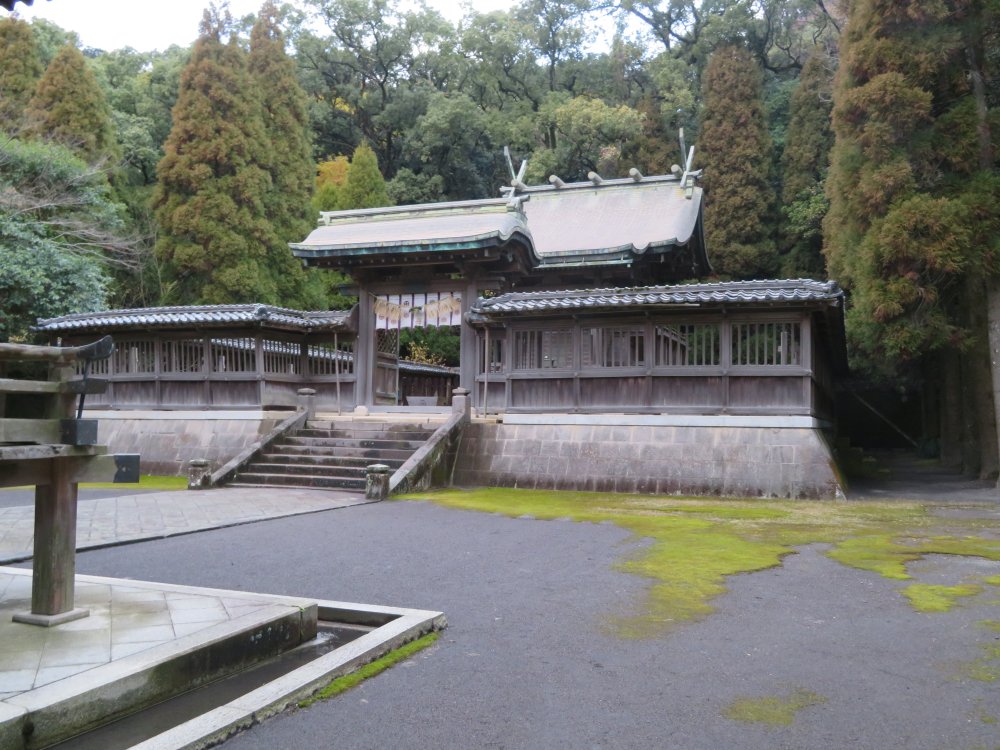
I made a quick visit to Tsurumine Shinto shrine.
It was getting dark and we hurried to reach the hotel in Kagoshima that we had had booked.